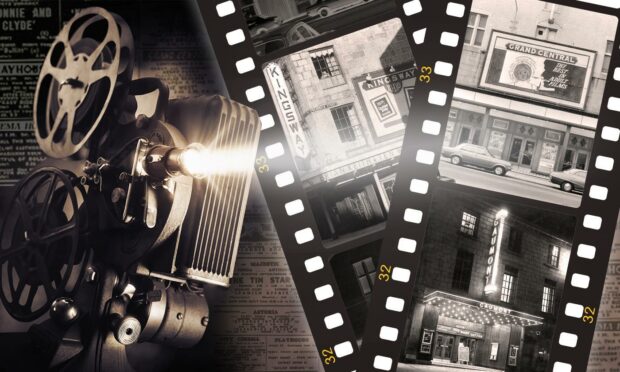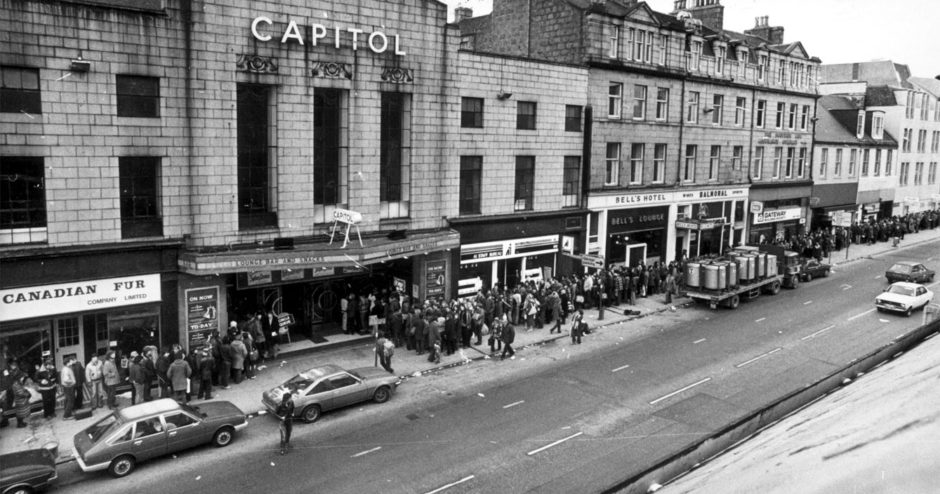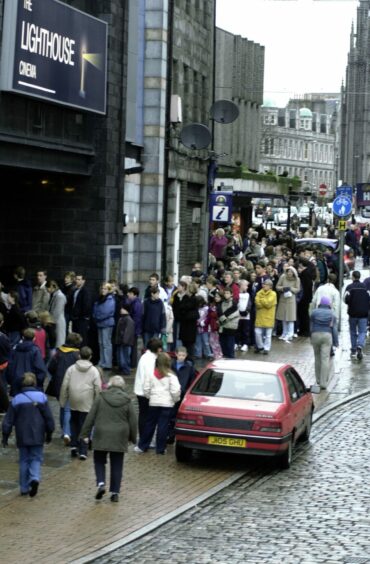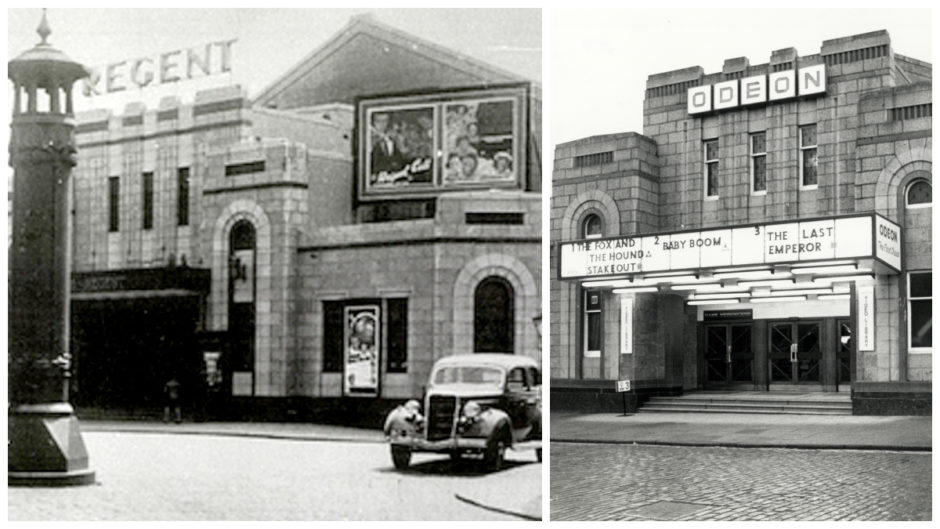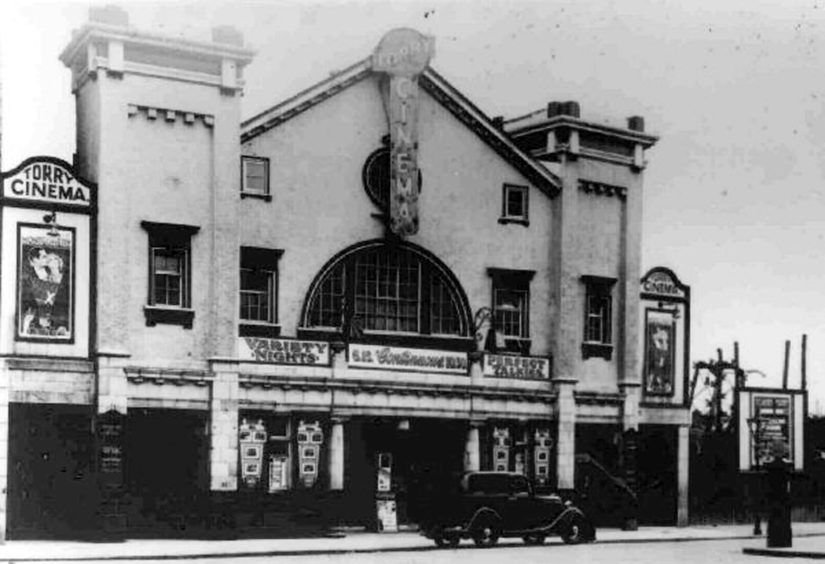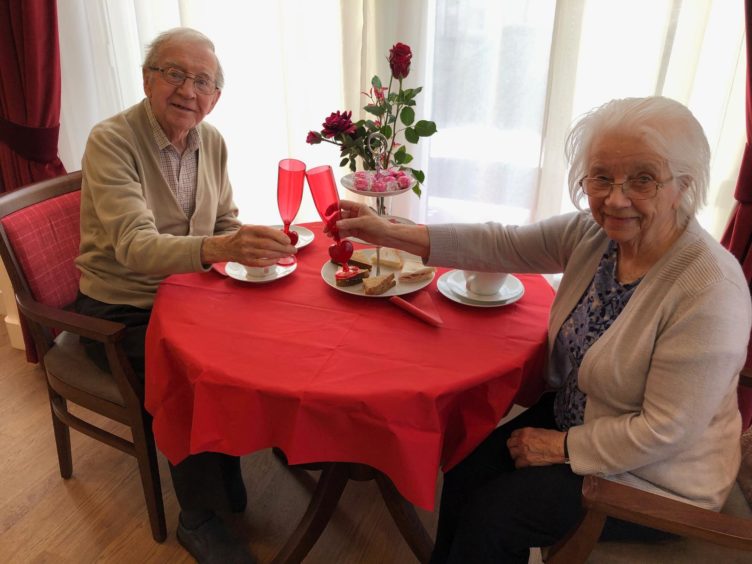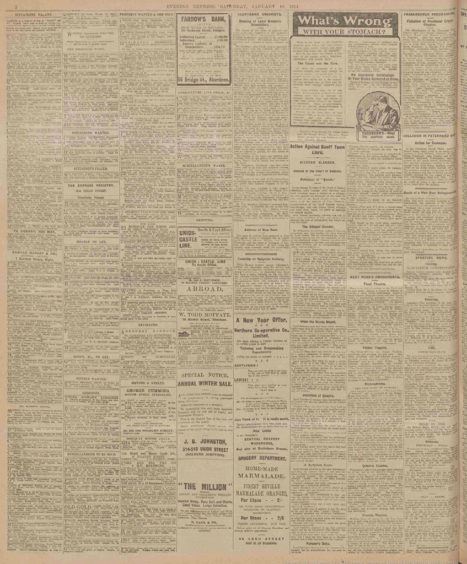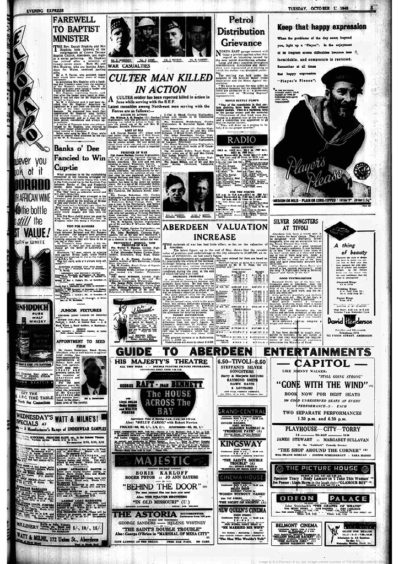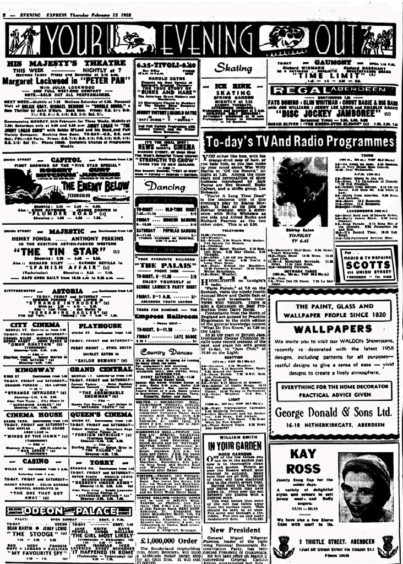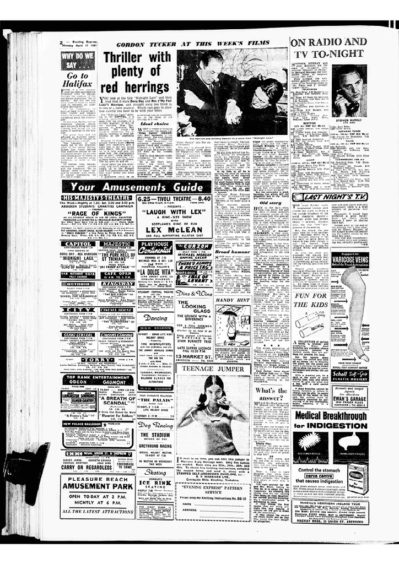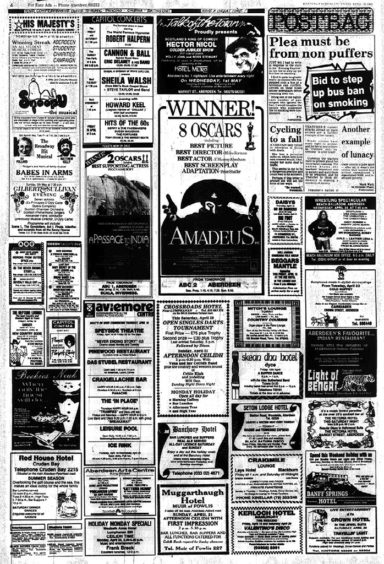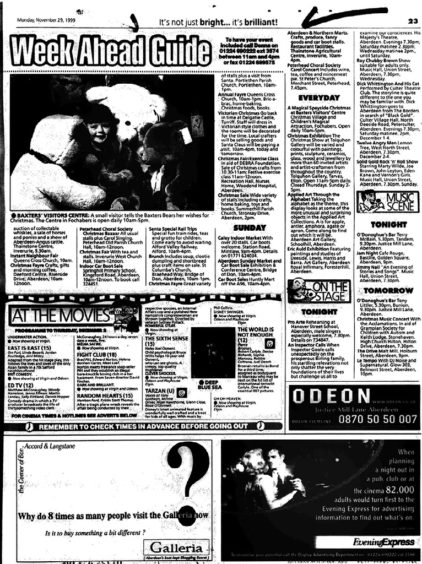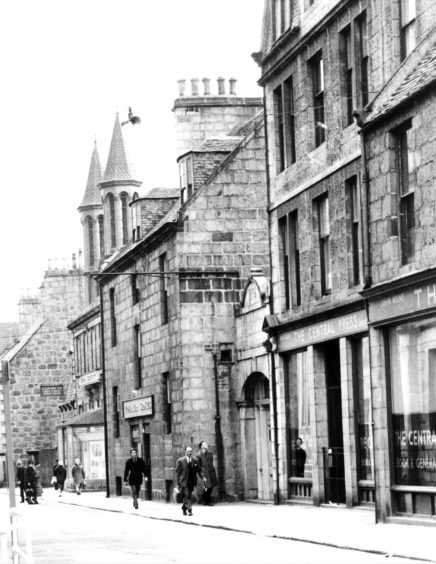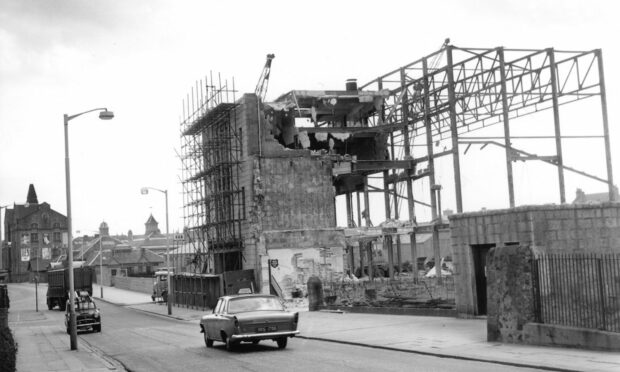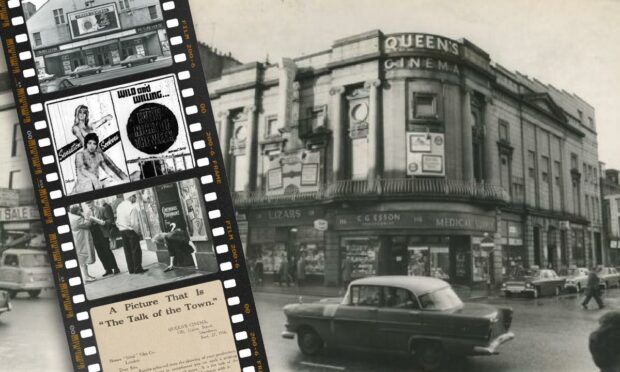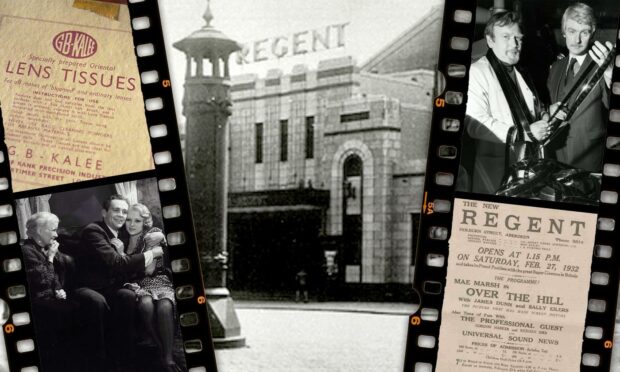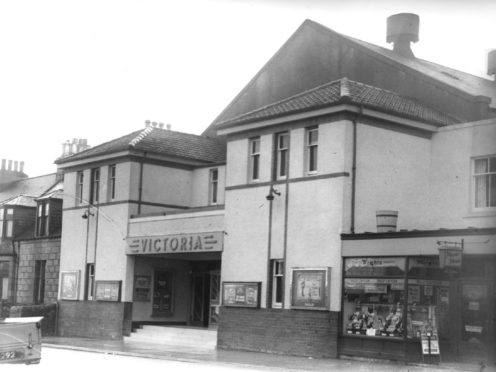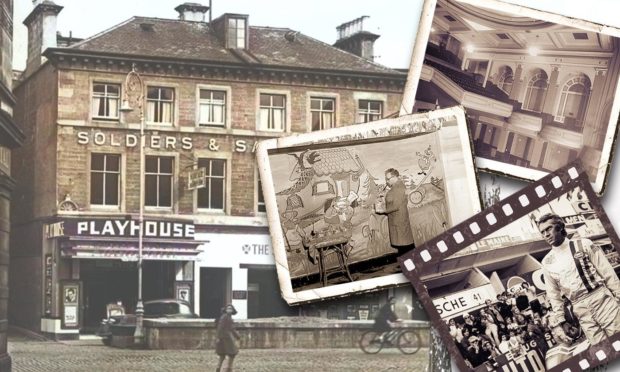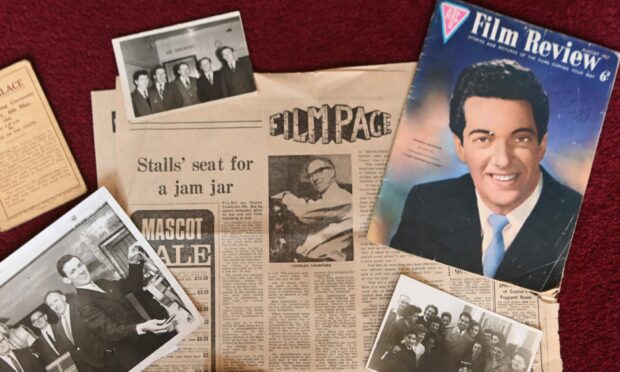Before the days of TV and streaming, it was the silver screen that reigned supreme in the Granite City.
Although Aberdeen now only has four cinemas – Vue, Belmont, and two Cineworlds – it was once home to dozens of venues, from grand thousand-seat theatres to cosy, intimate establishments.
From the early 1900s onward, cinemas started to appear across town with the number peaking in the 1940s. And with a new cinema on the way, what became of those which came before?
Over the years most have disappeared, or the buildings, such as the Palace or the Capitol, have been repurposed.
But with so many of these venues holding fond memories for residents, we’ve taken a trip down memory lane to look at some of the cinemas that have entertained audiences throughout the years.
The Cinemas of Aberdeen
Astoria Cinema
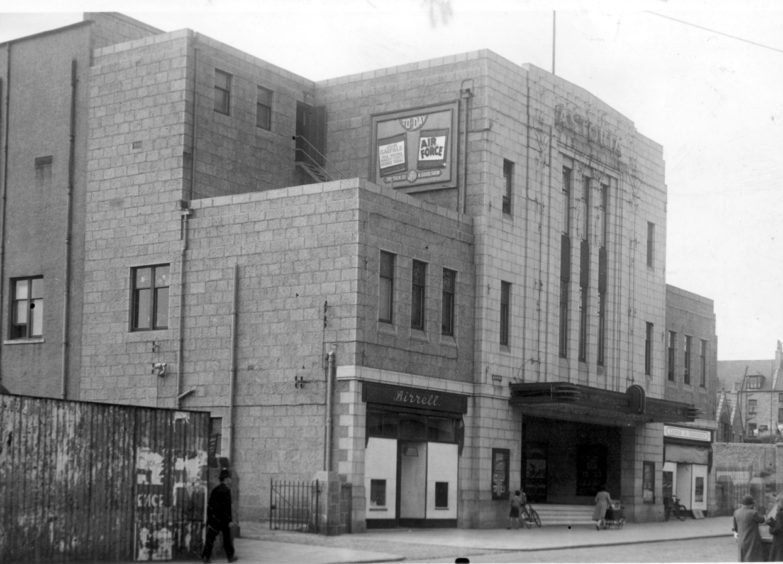 The Astoria opened in 1934 on Central Park, Kittybrewster. Although beloved by fans, it closed in 1966 because of its location.
The Astoria opened in 1934 on Central Park, Kittybrewster. Although beloved by fans, it closed in 1966 because of its location.
The cinema was demolished in 1967 to make way for a £150,000 shopping development.
Belmont Filmhouse
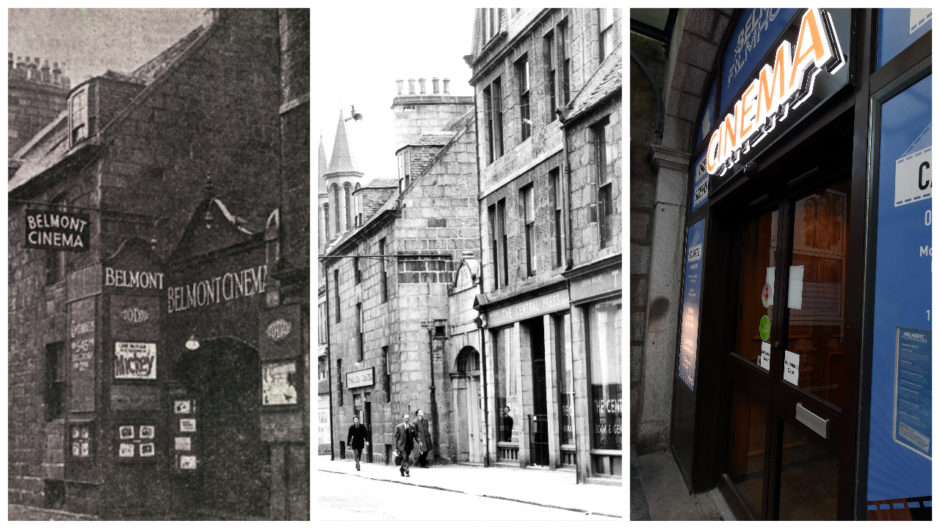 Still popular to this day, the Belmont is a staple of Aberdeen.
Still popular to this day, the Belmont is a staple of Aberdeen.
It was originally a Trade Hall but screened its first films in 1896. In 1919 it became a full-time cinema known as the Coliseum Cinema, then New Kinema before opening in 1935 as Belmont Cinema.
In 2000, The Belmont Picturehouse opened and in 2014 it was renamed, becoming Belmont Filmhouse.
Casino Cinema
 Casino opened on Wales Street in 1916, and was built on the grounds of a former slaughterhouse.
Casino opened on Wales Street in 1916, and was built on the grounds of a former slaughterhouse.
In 1959, despite its recent refurbishment, it closed to become a bingo hall. It was then demolished to build housing.
Woodside Electric
Woodside Electric first opened in 1912 on the grounds of the former skating rink, as its nickname the Rinkie tells.
The cinema was popular until 1918 when the building began deteriorating, leaving it cold and difficult to heat. Audiences dwindled until 1923, when the owner began struggling financially leading to its closure.
Cinema House
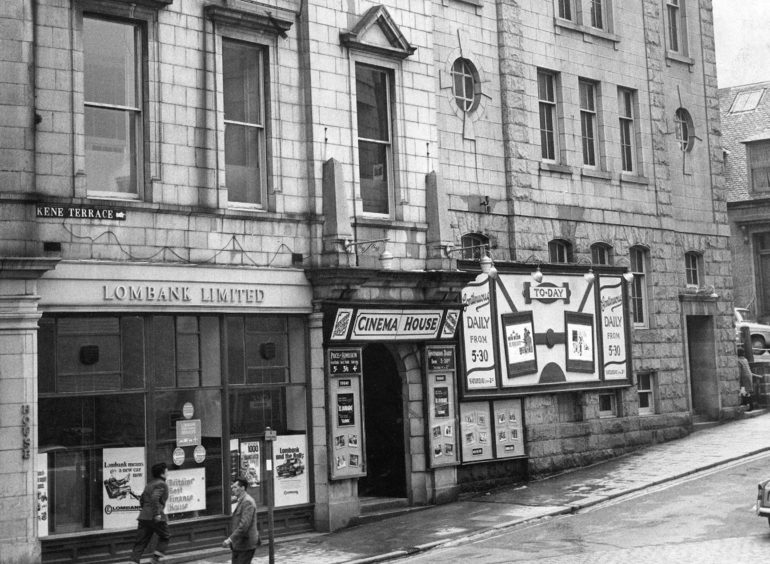 Formerly Union Hall, this building began its life in 1897. It was used for occasional picture showings until 1910 when it became the Picturedome.
Formerly Union Hall, this building began its life in 1897. It was used for occasional picture showings until 1910 when it became the Picturedome.
It was renamed the Cinema House in 1924 before closing in 1971 to become a bingo club. It is currently unoccupied after venue The Assembly closed.
City Cinema
 The low-cost cinema opened in 1935. Unusually, its entrance was through a tenement of flats.
The low-cost cinema opened in 1935. Unusually, its entrance was through a tenement of flats.
It closed its doors in 1963 before becoming a bowling alley that was shut in 2007. The building was demolished but the flats remained.
Globe Picture Playhouse
In 1912, the Globe opened its doors on Nelson Street for the first time. It was affectionately known as the Globie, before it was taken over by the army in the early 40s.
No films were ever screened there again, however, the building is currently an independent business, Atmosphere Lighting and Sound.
Electric Cinema/Capitol Cinema
The Electric Cinema opened in 1910 on the grounds of the Arcade Skating Rink.
It was renovated into a Chinese themed auditorium in 1928 before being closed and demolished in 1932 to make way for Capitol Cinema.
The Capitol was then opened in 1933. From the 1950s, the venue was also used to host concerts, such as the wild 1964 Rolling Stones gig. The cinema then struggled on until 1995, when it showed its final film, before becoming a bar and nightclub.
The space has now been turned into offices.
Gaeity/Palladium Cinema/Regal/ABC/Cannon Aberdeen/Lighthouse/Vue
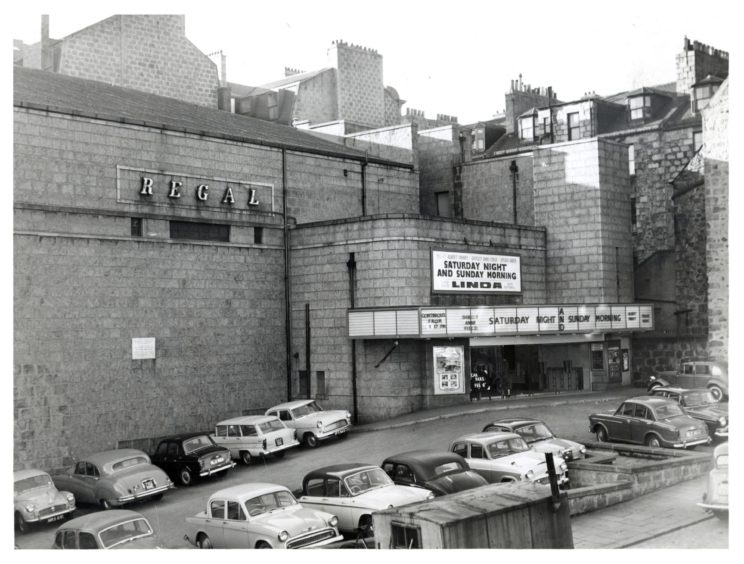
This cinema has gone under many names over the years and is currently known as the Vue.
It opened as the Gaeity in 1908, before being renamed the Palladium in 1919. The Palladium was closed in 1930 becoming derelict for a number of years.
Moving on from the Palladium, plans for the site were in motion. The Associated British Cinemas (ABC) took over and constructed the Regal cinema which opened in 1954.
After being closed for refurbishment in 1974, the Regal became the ABC before being taken over by the Cannon group in 1987. The cinema was renamed as the Cannon and operated until 1998 when it closed.
In 2000, the building was demolished to make way for the new Lighthouse Cinema which opened in 2001. By 2004, the theatre had become the Vue – as it remains today.
Grand Central Cinema
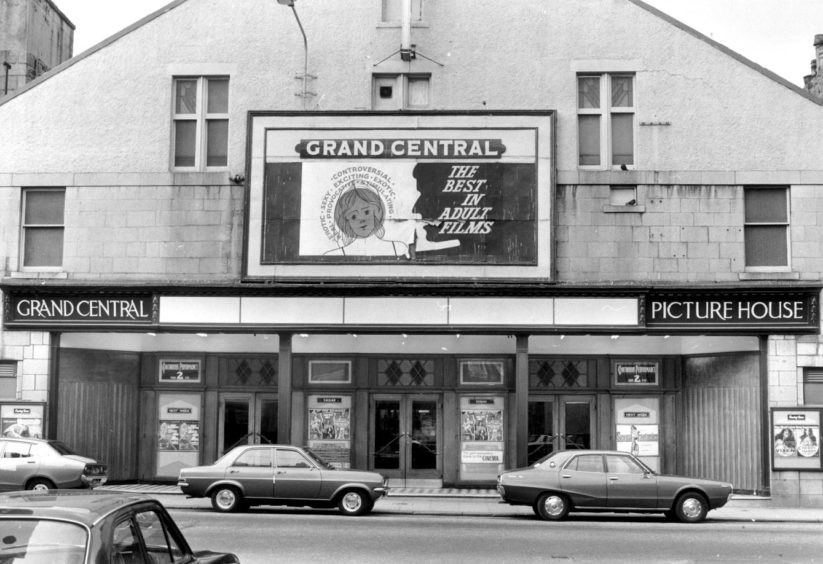 For almost 60 years the Grand Central Cinema on George Street was a popular film venue, eventually becoming Aberdeen’s premier spot for ‘adult’ film showings.
For almost 60 years the Grand Central Cinema on George Street was a popular film venue, eventually becoming Aberdeen’s premier spot for ‘adult’ film showings.
Its closure in 1981 was notable for Aberdeen as it shut on the same day as the popular Queen’s Cinema on October 17. The building stayed as it was until 1984 when it became a housing development.
Kingsway Cinema
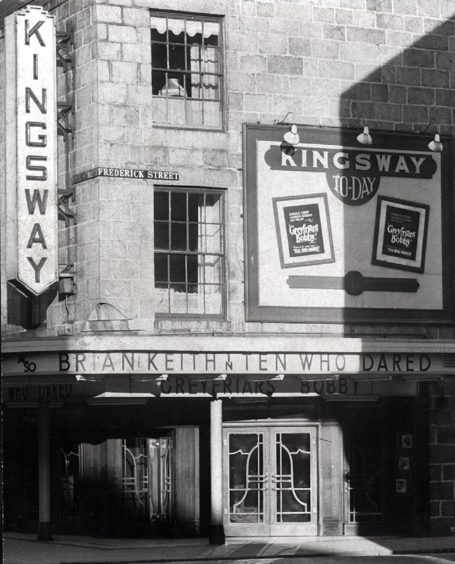 Kingsway still stands today – although as a bingo hall. The King Street cinema was known for its spacious foyer area. It opened in 1939 and operated until 1963 when it became the largest bingo hall in northern Scotland.
Kingsway still stands today – although as a bingo hall. The King Street cinema was known for its spacious foyer area. It opened in 1939 and operated until 1963 when it became the largest bingo hall in northern Scotland.
Argosy
This Bucksburn cinema on Auchmill Road opened between 1940 and 1947 under the original name of Glen Cinema.
It was renamed the Argosy at some point before 1953. No closure date is known for certain, but part of the building was demolished with planning permission for housing granted.
La Scala Photo Playhouse/Majestic Cinema
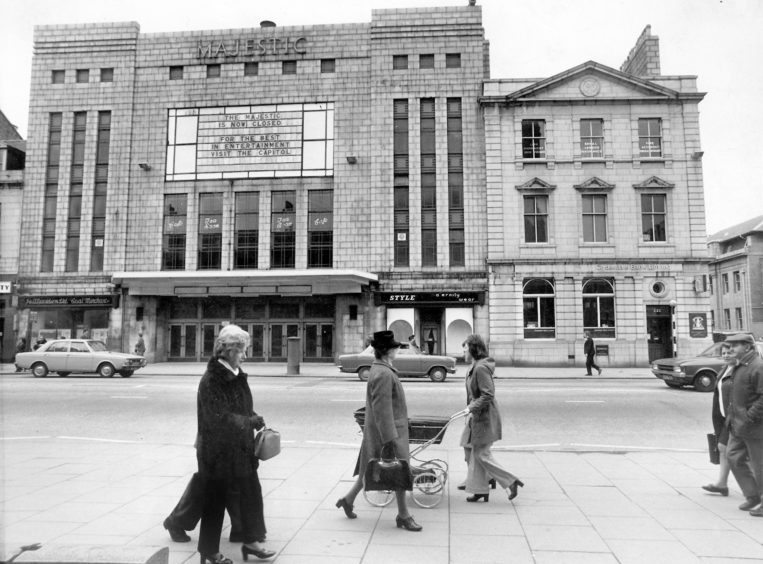 La Scala Photo Playhouse on Union Street was the first purpose-built cinema in the city.
La Scala Photo Playhouse on Union Street was the first purpose-built cinema in the city.
It opened in 1914 but was closed and demolished by 1934 to make way for the Majestic Cinema, which opened two years later. It entertained audiences for decades, but shut in 1973 before eventually being demolished.
News Cinema/Curazon/Cosmo 2
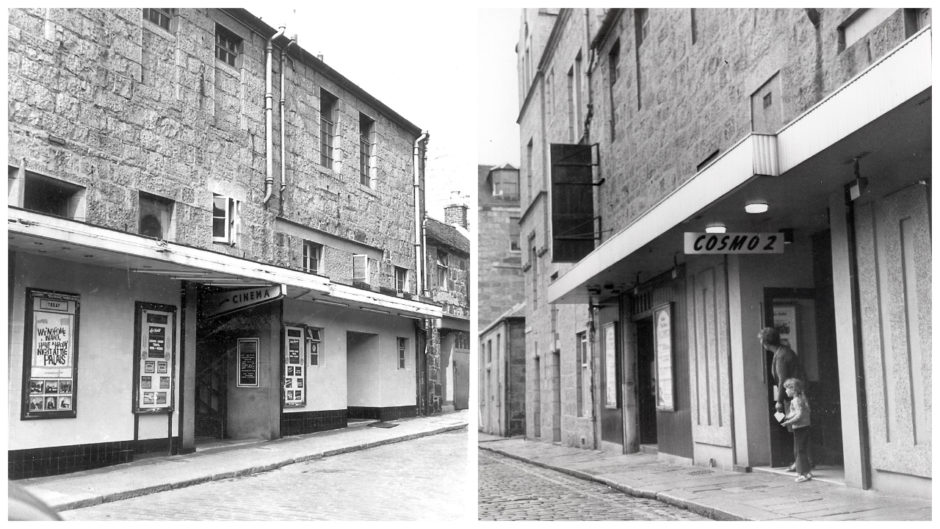 This former stable became the News Cinema in 1936. It changed name to the NewCine Continental in April 1955, before becoming the Curzon in 1959.
This former stable became the News Cinema in 1936. It changed name to the NewCine Continental in April 1955, before becoming the Curzon in 1959.
It was then taken over and refurbished to become the Cosmo 2. It closed in 1977, and the empty building was destroyed by fire in the 80s.
King’s Cinema
From 1911 until 1940, King’s was a popular cinema in a great location on George Street.
It was eventually closed and converted into a ballroom, perhaps most notably the Locarno Ballroom, which it remained until 1955. The site was demolished in the late 70s to make way for a car park.
Palace Theatre
 With more than 1,800 seats the Palace Theatre opened in 1898, among the earliest of the Granite City cinemas.
With more than 1,800 seats the Palace Theatre opened in 1898, among the earliest of the Granite City cinemas.
Films were regularly screened from 1911 onward and in 1929 it was taken over, becoming a 2,000-seat cinema.
It closed its doors in 1959, and has been home to a number of Aberdeen nightclubs since, including Liquid, the Mudd Club and Atik, as it now operates.
The Picture House/Gaumont Aberdeen
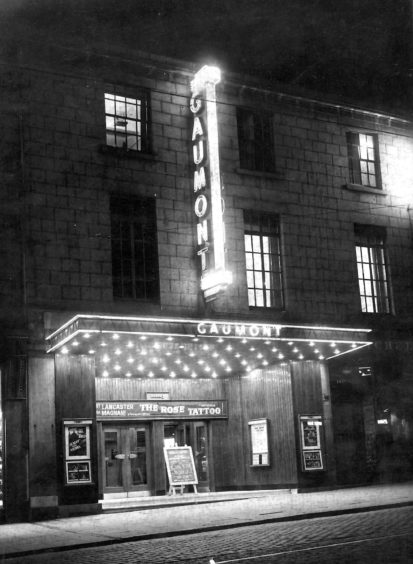 The Picture House opened on Union Street in 1914 before it was taken over by Gaumont British Theatres in 1929.
The Picture House opened on Union Street in 1914 before it was taken over by Gaumont British Theatres in 1929.
It was later, in 1950, renamed the Gaumont. It was eventually demolished, but 181 Union Street has been a shop, formerly hosting Ponden Homes, and is now Merkur Slots – an adult gaming centre.
Alhambra
Opened in 1881 on Exchange Street, the Alhambra was converted from a disused church into a cinema.
It now lies empty, but was formerly a takeaway.
The Playhouse
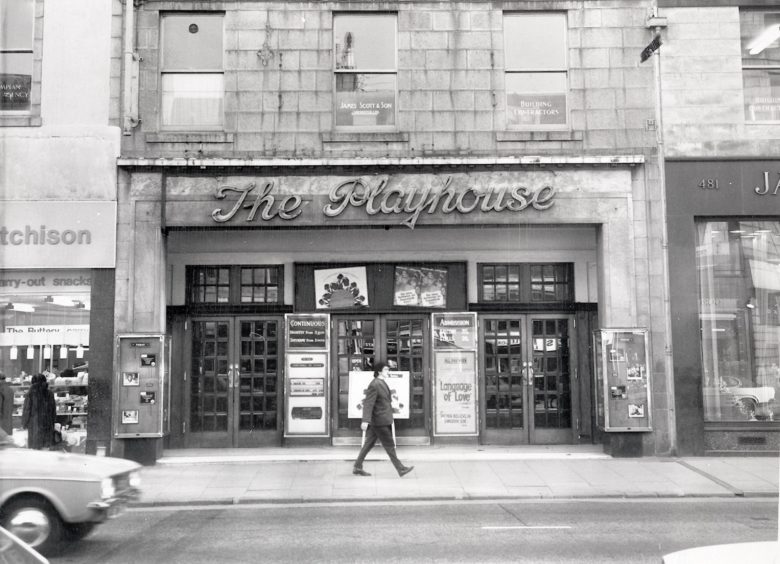 The Playhouse opened in 1921 on the site of a former billiard hall which had been known as the West End Picture House.
The Playhouse opened in 1921 on the site of a former billiard hall which had been known as the West End Picture House.
The Playhouse also was home to the Ingleneuk Cafe which closed a few years before the entire cinema did in 1974, when it was also demolished.
Queen’s Cinema
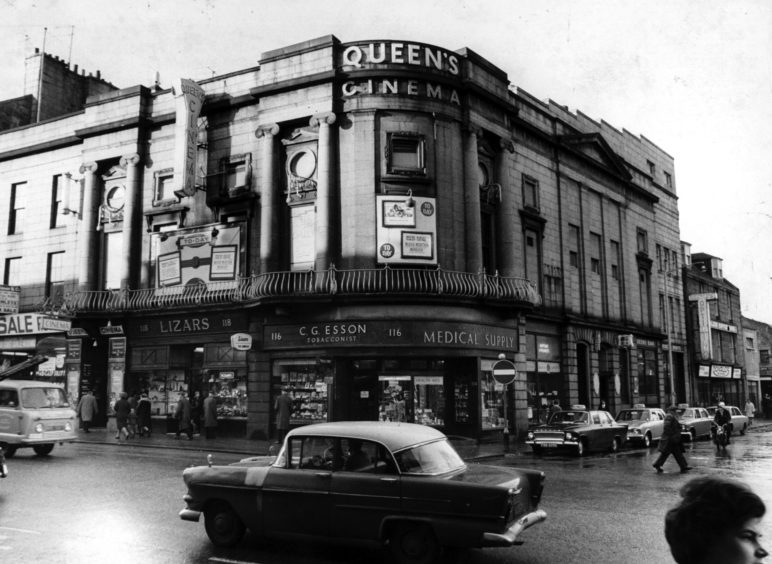 This cinema was built in 1913 and could hold 580 people with both stalls and circles.
This cinema was built in 1913 and could hold 580 people with both stalls and circles.
The closure of the Queen’s was the end of an era for Aberdeen cinema as it closed on the same day as the Grand Central Cinema did in 1981.
Currently, the location is home to Beaverbrooks, the jewellers.
Regent/Odeon
Built in 1932, the Regent had a capacity for 2,100, including 500 on the balcony. It was a firm favourite in the city, and 1940 it became the Odeon — Aberdeen’s first ‘supercinema’.
It was expanded in the 70s, then again in 1995, however by 2001, the writing was on the wall and the cinema shut for the final time.
It became a health studio in 2002 and presently, the C-listed building is home to Nuffield Health.
The Star Picture Palace
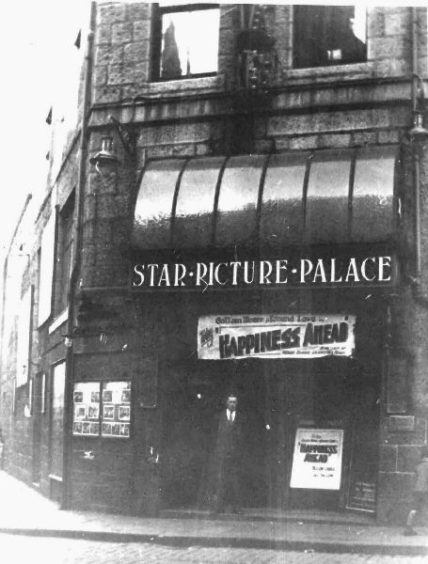 Known as the Starrie, the former mission hall on Park Street became a cinema in 1911.
Known as the Starrie, the former mission hall on Park Street became a cinema in 1911.
It was successful until the war, when it was almost forgotten about, before finally being demolished in 1971 to make way for new housing.
The Lyceum/Royal Cinema
The Lyceum was opened in 1913 on the premises of a former Zion church. By 1916 it had switched names to become the Royal Cinema.
By 1918, it had shut down to become the John Street Hall and it is now the Mither Tap bar.
Torry Picture House
The former skating rink transformed into a popular film venue in 1921.
It became Torry Cinema in 1930 when sound equipment was installed, remaining a firm favourite until 1966 when it became uneconomic to run and was shut down. The building was then demolished to build shops.
Aberdeen couple remember special times at cinemas
Aberdeen couple Bill and Mary Jolly went on dates to the movies at the start of their relationship and would often frequent the Kingsway Cinema after they married in 1954.
Bill said: “I think we probably went to the cinema for our first date. I was always buying nice things and taking Mary out to try to impress her.
“We tried out all the cinemas really, but liked Kingsway the best as it was just round the corner from our house after getting married.
“We would get shown to our seats by the usherettes who were still working in the cinemas at that time. They had tiny hand-held torches to guide you to your seat and when it came to the intermission, they would be there with little tubs of ice-cream in the carrier round their neck.
“In those days you got two films when you went to the cinema, so during the intermission there was local news clips that were shown.”
The 89-year-old would often treat Mary to an ice cream or her favourite chocolate, Black Magic which Bill called Black Tragic.
He added: “We liked the Gaumont as we felt it was classy. The seats were great, especially the love seats up the back, but I won’t say much more about that. You could say it was a good place to exchange those chocolates.
“The cinemas were different back then. Unlike today, the feature film was followed up with another shorter film. You were allowed to smoke in the cinema back then too, not that we did, we were too busy enjoying the Black Tragic.”
What was on in Aberdeen: A look back at cinema listings over the years
1914
In this early edition of the paper, the small entertainment section features reviews of the latest screenings at cinemas.
The movies on show at the time were silent films that would keep Aberdeen audiences entertained for hours.
1940
The Capitol in 1940 was showing Gone With The Wind, the nearly four-hour 1939 Best Picture Academy Award Winner.
Other films showing at the time include The House Across The Bay and He Married His Wife starring Cesar Romero.
1958
At the beginning of 1958, Aberdeen residents could visit 15 cinemas of their choice with each showing different movies.
You could visit the Odeon at the Holburn Junction and watch the Stooge starring Dean Martin and Jerry Lewis or The Capitol for the top-billed war movie The Enemy Below.
1961
You could visit Grand Central Cinema in April 1961 and enjoy the Disney classic Cinderella.
Also on show at the time was Federico Fellini’s award-winning Italian drama La Dolce Vita which was being broadcast with English dialogue.
1970
In April 1970 you could venture to movies and watch a young Julie Andrews in The Sound Of Music or Clint Eastwood in A Fistful Of Dollars.
Warren Beatty and Faye Dunaway were also stars of the screen at the time, starring in crime-thriller Bonnie And Clyde.
1985
The 80s was an exciting time for cinema, with showings of Ghostbusters, Purple Rain, The NeverEnding Story and even Beverly Hills Cop.
Also on show was Amadeus, the 1984 winner of the Best Picture Academy Award.
1999
If you wanted to go to the movies in 1999, you could swing by Virgin Cinemas or the Odeon and watch blockbusters including Tarzan, The World Is Not Enough and Fight Club.
The change in cinemas
The change in cinemas in Aberdeen started when many of them shut down, particularly in 1981 when two popular theatres closed on the same day.
Many more followed and presently only four cinemas operate in Aberdeen, including Belmont Filmhouse.
The Belmont originally opened in 1896 as a Trades Hall before eventually becoming the full-time Coliseum Cinema in 1919.
Since then, it has undergone a number of changes and in 2014 it became the Belmont Filmhouse that we know it as today.
Head of cinema operations Colin Farquhar said: “There are lots and lots of old cinema sites in Aberdeen, as folk who know the city are aware.
“The one I used to come to when I was wee was the Odeon on Justice Mill Lane.
“I’m a Shire lad though, so we quite regularly would go to Elgin to the Playhouse there. Most of my formative film memories are from that building.”
The Belmont has been home to a number of events including movie premieres and Colin has seen a number of events pass through its doors, including the opening of director Terence Davies’ Sunset Song adaptation.
“The film premieres in my time have mostly been regional ones like You’ve Been Trumped, One Day Removals and Sunset Song – which is also the highest attended film we’ve ever done.”
